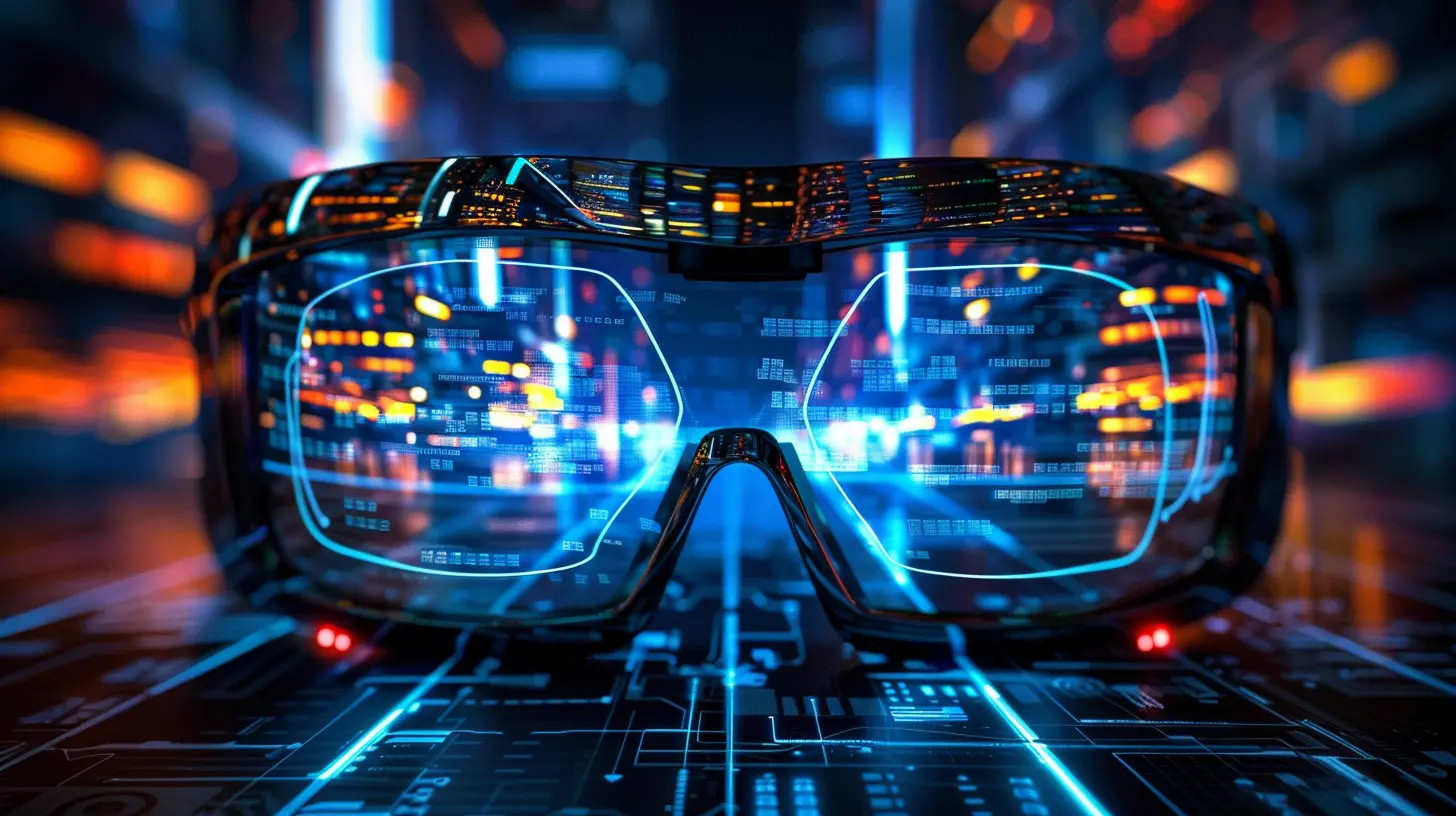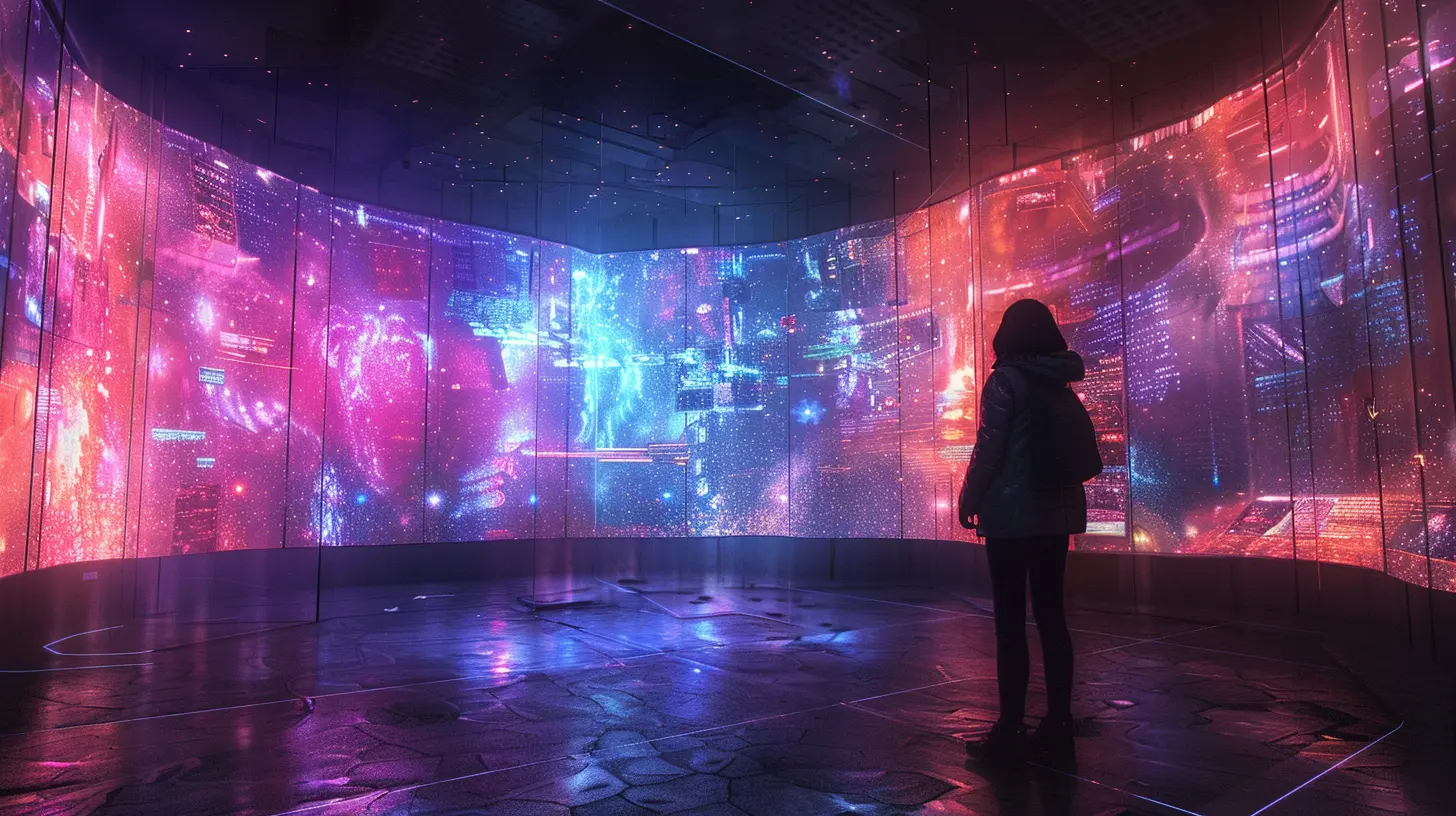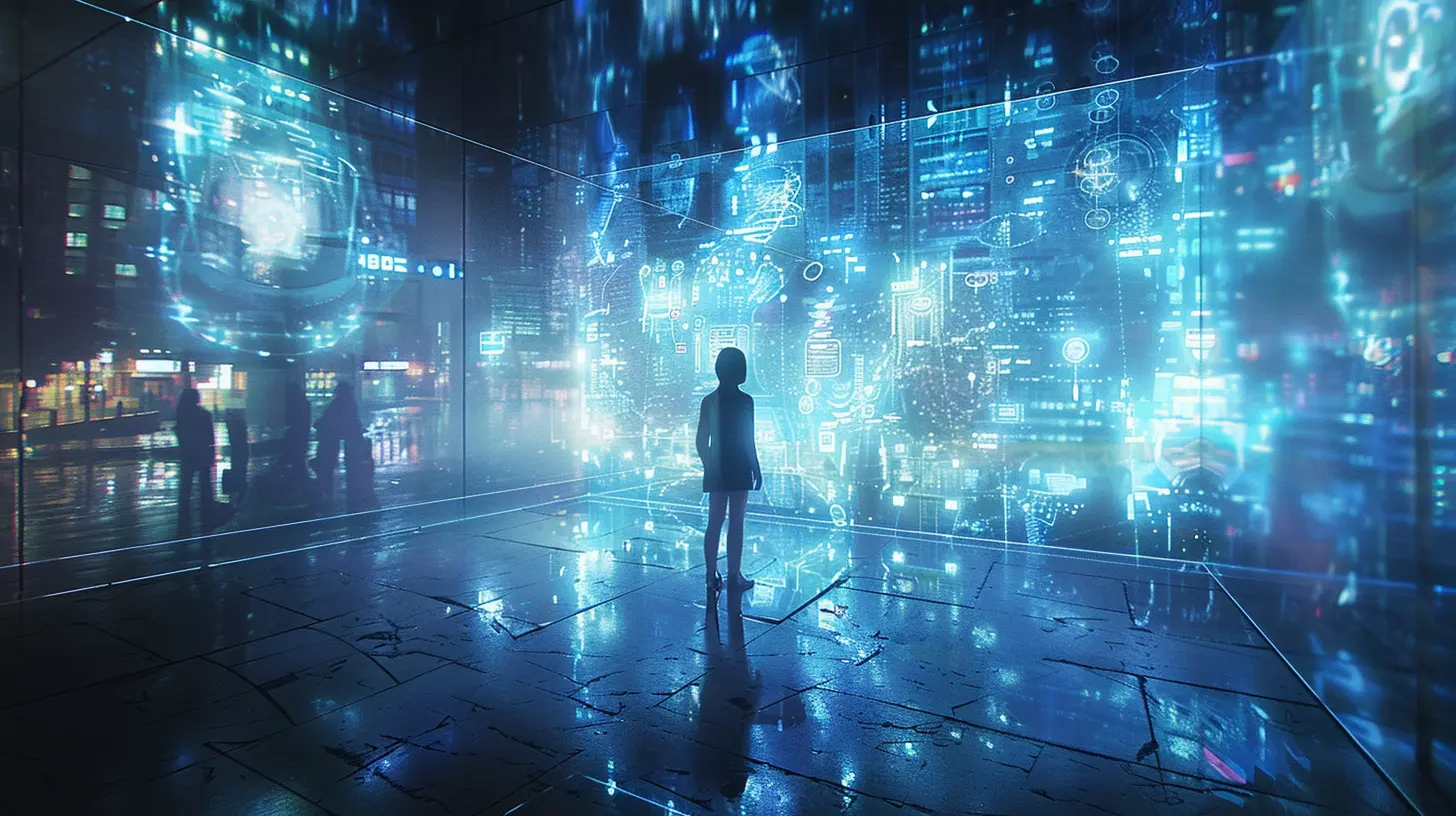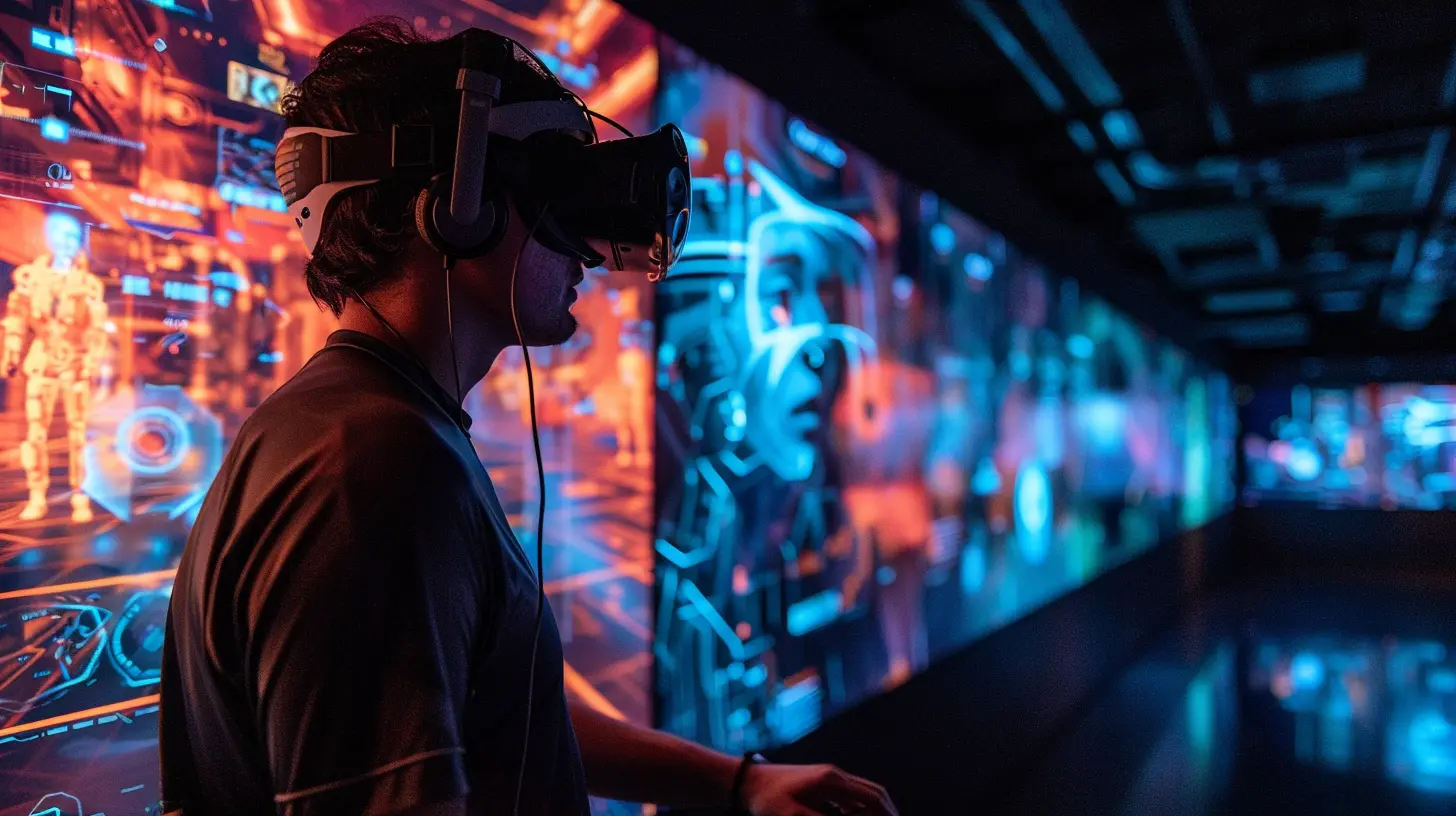Holographic Displays: The Future of Immersive Entertainment
16 July 2025
Imagine watching your favorite movie, but instead of seeing it confined to a flat screen, the characters come to life, stepping right off the screen and into your living room. Sounds like something out of a sci-fi movie, right? Well, not for long. With the rapid advancements in technology, holographic displays are slowly but surely becoming a reality. And trust me, it's about to change the way we experience entertainment forever.
Holographic displays have been a part of our collective imagination for decades, with iconic depictions like Princess Leia’s hologram in Star Wars. But now, we’re inching closer to making these fantastical images part of our daily lives. In this article, we're going to dive into the fascinating world of holographic displays, explore how they work, and why they represent the future of immersive entertainment.

What Exactly Are Holographic Displays?
Before we get too deep into the possibilities, let’s start with the basics. A holographic display is essentially a three-dimensional image that appears to float in space, viewable from different angles without the need for special glasses or headsets. Unlike 2D screens on our phones, TVs, or computer monitors, holographic displays project depth. They give you a sense that you’re seeing something real, something tangible right in front of you.It’s as if you’ve taken a flat image and breathed new life into it, making it real enough to touch (even though you can’t—yet). This makes holographics incredibly exciting for immersive experiences, where the line between the digital world and reality starts to blur.

How Do Holographic Displays Work?
Okay, so how do these magical 3D images actually come to life? It’s not as simple as projecting light on a surface, although light does play a huge role. Traditional 2D screens work by emitting light directly at your eyes, but holography works differently.Holographic displays use something called interference patterns. Without getting overly technical, this means they split light beams and then recombine them in such a way that it creates the illusion of depth. The light waves interfere with each other, and this interference is what we perceive as a three-dimensional image.
Some systems use lasers, while others use specialized transparent screens to reflect the light in just the right way. What’s really cool is that recent advancements have made it possible to create these displays in real-time, making it possible to interact with them as if they were real, moving objects.
So, in essence, holographic displays are not just about projecting images—they’re about manipulating light to trick your brain into seeing depth where there is none. It’s kind of like a magic trick, except this time, the magician is a bunch of super-smart scientists and engineers.

Why Are Holographic Displays the Future of Entertainment?
Now that we’ve covered the technical stuff, let’s get to the fun part. Why should you care about holographic displays, especially when we already have pretty amazing tech like 4K TVs, VR headsets, and augmented reality (AR) apps? Well, holography takes things to a whole new level.1. True Immersion
Virtual reality (VR) has been lauded for its immersive capabilities, but there’s one big problem—it requires you to wear bulky headsets. While VR is great in its own right, it’s not exactly convenient for everyday use. Holographic displays, on the other hand, offer a far more natural experience. There are no headsets, no glasses, and no barriers between you and the content.Imagine watching a live concert with holographic performers standing right in your living room. You could walk around them, see them from different angles, and feel like you're part of the show. That’s the kind of immersive experience holographic displays can offer, and it’s something traditional screens or even VR just can’t replicate.
2. Interactive Entertainment
One of the most exciting possibilities with holographic displays is how interactive they can be. Think about video games, for example. Right now, you control your character with a controller or a keyboard. But what if you could actually see that character in front of you, interacting with the game world in real-time?With holographic displays, you could literally reach out and swipe away enemies, pick up objects, or manipulate the game environment in ways that feel far more intuitive and engaging. Even board games could get a futuristic twist—imagine playing chess where the pieces are holograms that move themselves!
3. No More Screens
We’ve gotten pretty used to staring at screens all day—phones, tablets, TVs, computers. But what if holographic displays made those things obsolete? Instead of being limited to a flat, rectangular screen, you could have a holographic interface that appears in mid-air, accessible from any angle.This is where holograms could really shake things up. Want to make a video call? Instead of staring at a screen, the person could appear as a hologram in front of you. Need to navigate somewhere? Your GPS could project a 3D map of your route right in front of your eyes. The possibilities are endless, and they all point to a future where screens as we know them are a thing of the past.

Current Applications of Holographic Displays
Although we’re still in the early stages, holographic displays are already making their way into various industries. Some of these applications are less flashy than others, but they give us a glimpse of what’s possible in the near future.1. Medical Visualization
In the medical field, holographic displays are being used to create detailed 3D models of human anatomy. This allows doctors and surgeons to explore the body in ways that were previously impossible. Instead of looking at a flat MRI scan, for example, they can see a full 3D representation of a patient’s organs, making it easier to diagnose issues and plan surgeries.2. Education
Holograms can also play a huge role in education. From virtual field trips to interactive science lessons, holographic displays can make learning far more engaging. Imagine a history lesson where you can see ancient ruins reconstructed in 3D or a biology class where you can examine a holographic heart beating in real-time.3. Retail and Advertising
Retailers are also exploring the use of holographic displays to create more engaging shopping experiences. For example, holograms could allow customers to see a 3D representation of a product before buying it, or even try on virtual clothes without going into a fitting room. Advertisements could become more interactive, capturing people’s attention in ways that traditional billboards and TV ads can’t.Challenges Facing Holographic Displays
As amazing as all this sounds, there are still some hurdles to overcome before holographic displays become mainstream.1. Cost of Production
One of the biggest challenges is cost. Holographic technology is still relatively new, and producing high-quality holograms requires expensive equipment and materials. This is especially true for displays that generate high-resolution, full-color images.2. Processing Power
Creating holograms that move in real-time and react to user input requires a lot of processing power. While modern computers and GPUs are incredibly powerful, holograms demand even more. This means that, at least for now, holographic displays are limited to specialized applications where such power is available.3. Scalability
Another issue is scalability. While it’s possible to create small holographic displays, scaling them up to larger sizes (say, for a full-sized movie theater or a home entertainment system) is a lot more difficult. There’s still a long way to go before we can enjoy full-scale holographic movies in our living rooms.
The Future of Holographic Entertainment
Even with these challenges, it’s hard not to get excited about the future of holographic displays. As technology continues to advance, we can expect the cost of production to decrease, the processing power to increase, and the ability to scale up to larger displays to improve.In the next decade, we might see holograms in everything from video games to live concerts, from educational tools to day-to-day communications. The entertainment industry, in particular, stands to benefit the most from these advancements, offering viewers experiences that are more immersive, interactive, and engaging than ever before.
It’s safe to say that holographic displays aren’t just a passing trend—they’re the future of immersive entertainment. So, the next time you’re watching a movie or playing a video game, just imagine how much cooler it would be if those characters were standing right in front of you. That future isn’t far off, and it’s going to be incredible.
all images in this post were generated using AI tools
Category:
Future TechAuthor:

Reese McQuillan
Discussion
rate this article
1 comments
Avery Richardson
Holographic displays will revolutionize entertainment, creating breathtaking experiences that blur reality and imagination!
July 25, 2025 at 11:01 AM

Reese McQuillan
Absolutely! Holographic displays have the potential to transform entertainment by providing unparalleled immersive experiences that engage our senses like never before.


